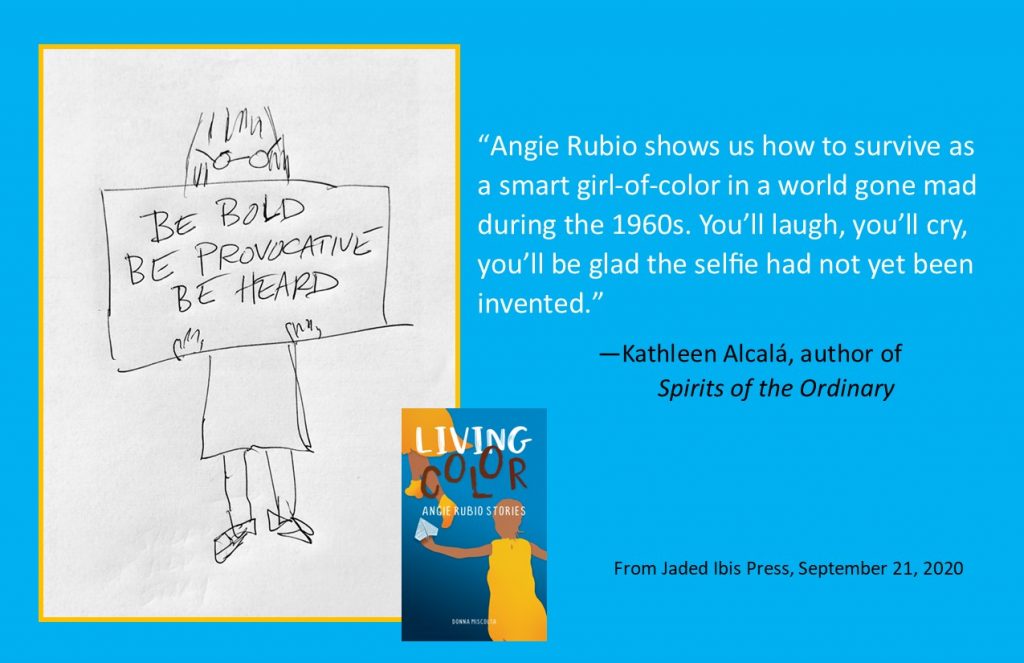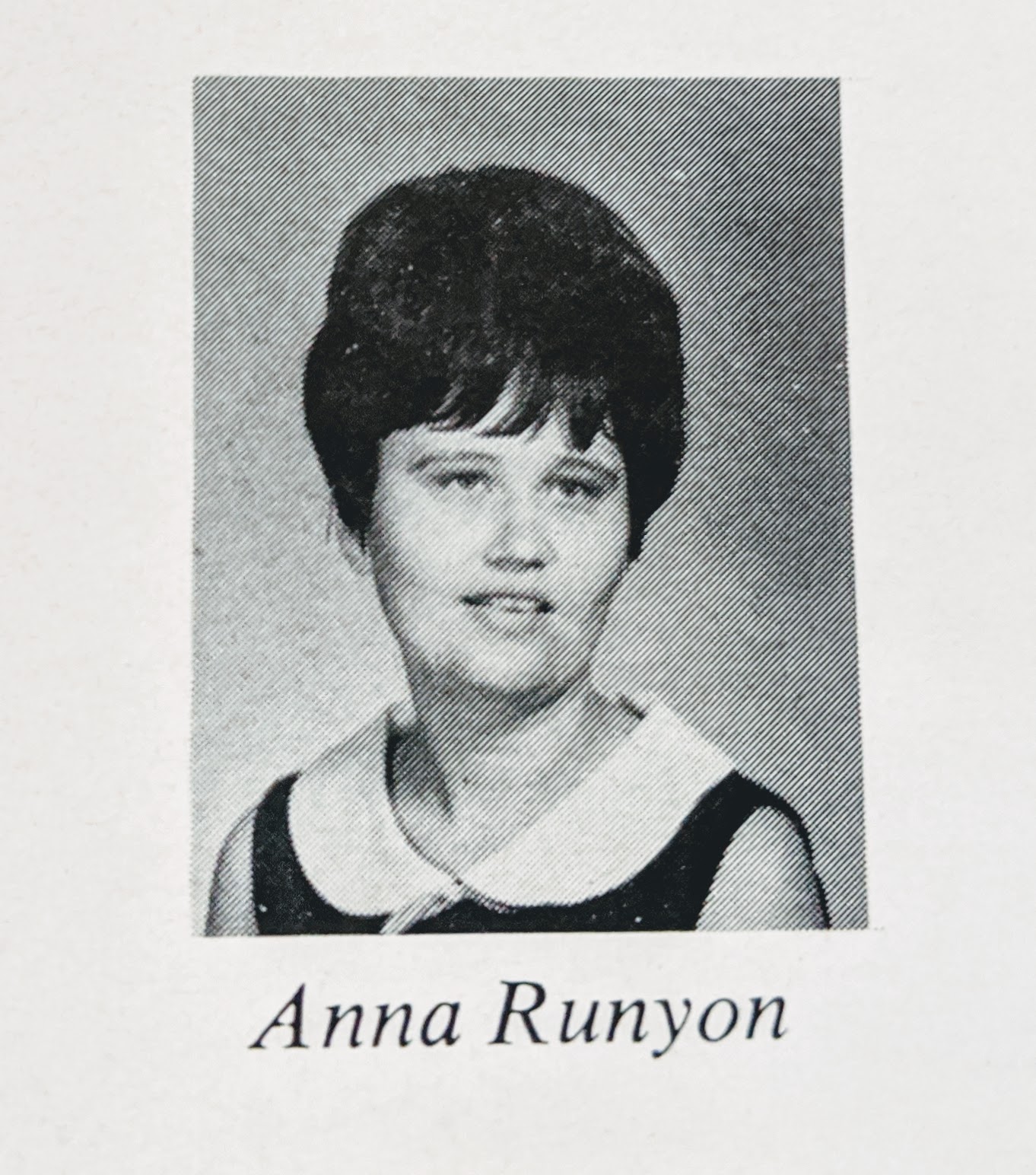What Angie Rubio Owes to My Junior High English Teacher

In less than two months, Angie Rubio will enter the world as the shero of her own relatively ordinary, yet microaggression-ridden life when Living Color: Angie Rubio Stories is released from Jaded Ibis Press on September 21. You can pre-order your copy from the terrific folks at Elliott Bay Books.
Writer Kathleen Alcalá sums up the story nicely: “Angie Rubio shows us how to survive as a smart girl-of-color in a world gone mad during the 1960s. You’ll laugh, you’ll cry, you’ll be glad the selfie had not yet been invented.”
 Imagine the granny dresses, the bellbottoms, and the beehive hairdos of the in-crowd. Imagine, in my case, pink cat-eye glasses and a flip hairstyle with cloth head band. Not a pretty picture.
Imagine the granny dresses, the bellbottoms, and the beehive hairdos of the in-crowd. Imagine, in my case, pink cat-eye glasses and a flip hairstyle with cloth head band. Not a pretty picture.
The working title of this book was The Education of Angie Rubio because each story finds Angie in a predicament in the classroom where she is schooled, intentionally or not, in matters of race and gender, not to mention sex education. There’s the discomfiture of being a brown Brownie, the shame of being in the “dumb” class, and the ignominy of a low score on a sexual activity quiz, to name a few. The stories owe as much to my imagination as to memories of my own mortifications growing up as a skinny, awkward brown girl and the people who, intentionally or not, helped lessen the blows of the emotional and psychological mayhem called girlhood.
When I was thinking about the acknowledgements page for Living Color, I thought about my Language Arts and English teachers in elementary and secondary school and I included several who inspired a few of the characters in the stories. One of them was Mrs. Runyon. She was my ninth-grade English teacher in whose class I excelled, paving a path of elevated expectations for my three younger siblings who ended up in her class after me. By all accounts, I was a hard act to follow.
 No teacher ever escapes the adolescent critical eye when it comes to physical appearance and mannerisms. To her students, Mrs. Runyon’s faults were her unshaved legs and armpits. She was also mocked for her pronunciation of certain words in her faint southern accent. But the fact was she was a good teacher.
No teacher ever escapes the adolescent critical eye when it comes to physical appearance and mannerisms. To her students, Mrs. Runyon’s faults were her unshaved legs and armpits. She was also mocked for her pronunciation of certain words in her faint southern accent. But the fact was she was a good teacher.
I think that my motivation to do well in her class came not just from my own need for achievement, but from a desire to please her. At some level, I recognized that her effort to teach me deserved a comparable effort by me to learn.
I don’t know if Mrs. Runyon is still living. But I salute her. She had an impact on me. So when you pick up a copy of Living Color in September and read the story “Class Play,” think of an English teacher who made a difference in your life.
To be clear, Living Color is a book of fiction. And while the events in Angie’s life may vaguely resemble ones that happened to me, they may also resemble ones that happened to many of you.
The writer Ivelisse Rodriguez says: “We have all been Angie Rubio, voiceless, rejected, but always on the precipice of being more.”